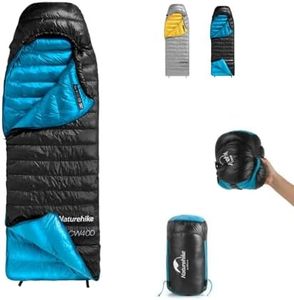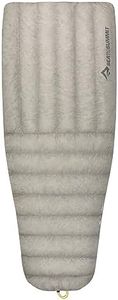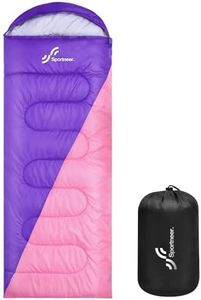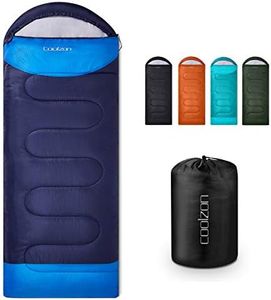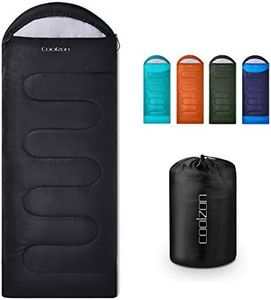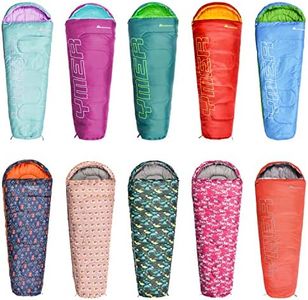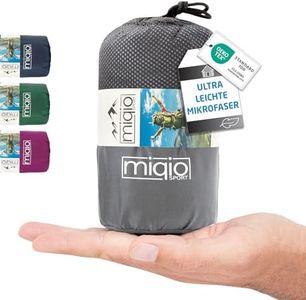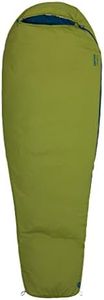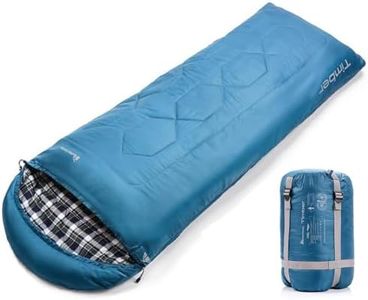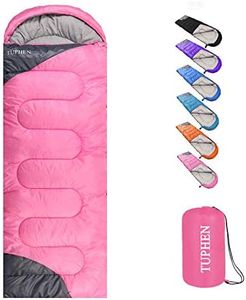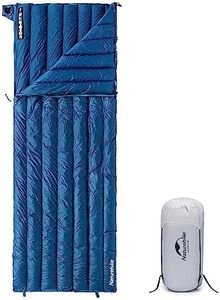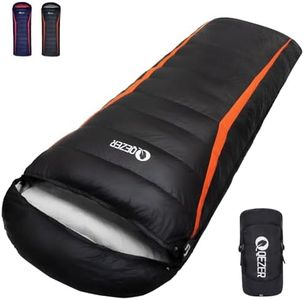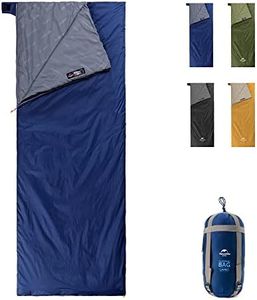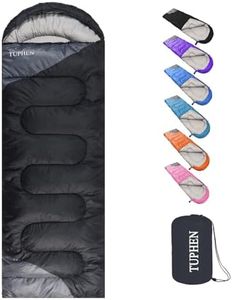We Use CookiesWe use cookies to enhance the security, performance,
functionality and for analytical and promotional activities. By continuing to browse this site you
are agreeing to our privacy policy
10 Best Lightweight Summer Sleeping Bag
From leading brands and best sellers available on the web.Buying Guide for the Best Lightweight Summer Sleeping Bag
Choosing a lightweight summer sleeping bag is all about making your outdoor experience comfortable without carrying any unnecessary weight. These bags are designed to keep you cool during warm nights, provide just enough insulation, and are easy to carry for camping, backpacking, or festivals. Before picking one, consider how you'll use it—think about the climate, how you sleep (cold or warm), and how much you value packability versus comfort. The right sleeping bag can add a lot to your enjoyment by helping you sleep well, recover, and face your adventures feeling refreshed.Temperature RatingThe temperature rating tells you the lowest temperature at which the sleeping bag is designed to keep an average sleeper comfortable. For summer, you typically want a bag rated between 35°F to 55°F (1.5°C to 13°C). If you often camp in warmer climates or indoors, a higher temperature rating will be comfortable, while cooler summer nights might need a lower rating. Consider your own body’s preferences—if you get cold easily, opt for a slightly lower temperature rating, and vice versa.
WeightWeight matters a lot, especially if you plan to carry your sleeping bag on your back over long distances. Lightweight summer sleeping bags usually weigh between 1 to 2.5 pounds (0.5 to 1.1 kg). If every ounce counts (like for backpacking or long hikes), aim for the lighter end, while a bit more weight is fine for car camping or short walks. Your specific needs—mostly how far you have to carry the bag—should guide your decision.
Packed SizePacked size is how small the sleeping bag gets when it's stuffed into its sack. Summer sleeping bags tend to be highly compressible. If you have limited space in your backpack, look for a bag that packs down very small, usually about the size of a water bottle or a small loaf of bread. For those not worried about space (like car campers), packed size is less critical, so you can afford a slightly larger bag if it’s more comfortable.
Insulation TypeSleeping bags can be filled with either synthetic fibers or down feathers. Synthetic insulation dries quickly and keeps you warm even if it gets a bit wet—an advantage in humid or unpredictable climates. Down insulation is ultra-light and highly compressible, ideal for minimal bulk, but it’s less effective when wet and often more expensive. Think about the conditions you’ll encounter: go for synthetic for reliability in damp or messy environments, or down for maximum lightness in dry areas.
ShapeSleeping bags come in different shapes—rectangular, mummy, and semi-rectangular (also known as barrel-shaped). Rectangular bags offer more room to move and are great if you like to spread out, but they are usually a bit heavier and less thermally efficient. Mummy bags are slimmer, saving weight and retaining heat better, but may feel restrictive to some sleepers. Semi-rectangular bags try to balance comfort and efficiency. Pick a shape that matches your typical sleeping style—more movement needs more space, while still sleepers may prefer the snugger mummy style.
Material and BreathabilityThe fabric covering the sleeping bag should be lightweight and breathable to avoid overheating on warm nights. Look for materials like nylon or polyester with a soft feel. Breathability lets sweat escape, reducing clamminess, especially during humid nights. If you often get hot when you sleep, prioritize a bag that advertises good airflow or includes mesh panels.
